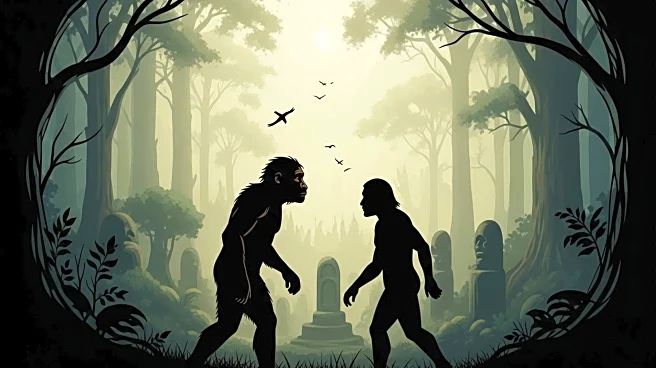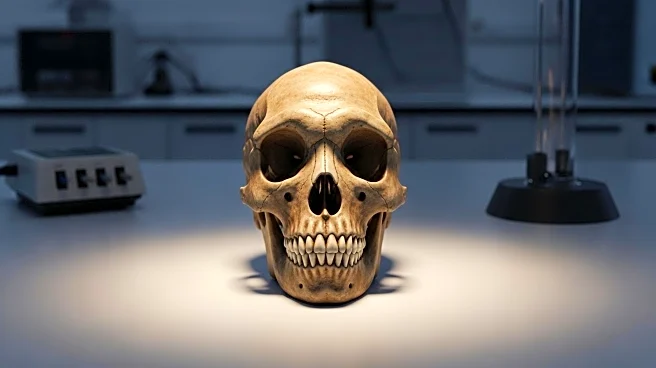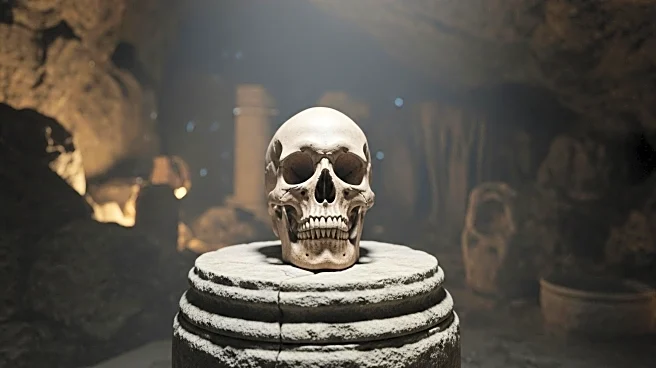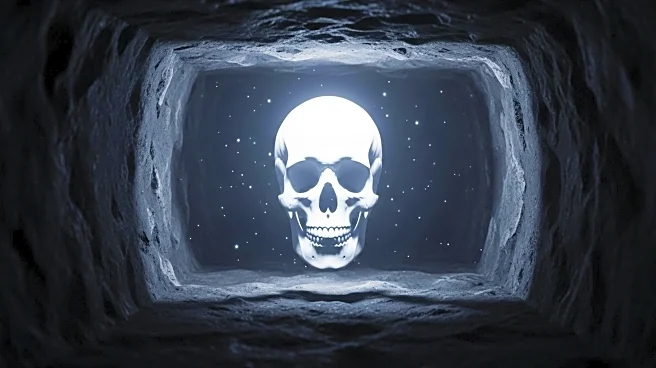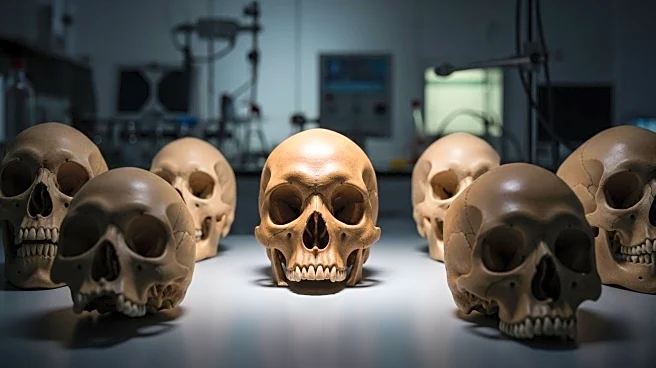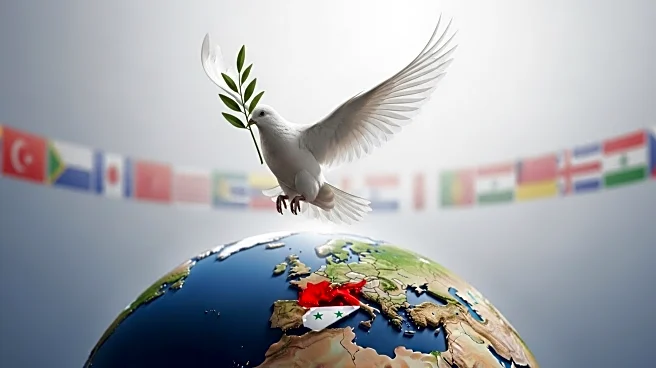What's Happening?
Recent research suggests that Neanderthals and Homo sapiens may have interbred nearly 100,000 years earlier than previously thought. This conclusion is based on the analysis of skeletal remains found at Skhul Cave in Israel, which exhibit both Neanderthal and Homo sapiens features. The study, published in the journal L’Anthropologie, utilized high-resolution scans to examine the cranium and jaw of a child, revealing anatomical traits of both species. This finding challenges earlier DNA analyses that indicated interbreeding occurred between 50,500 and 43,500 years ago. The research highlights a prolonged period of coexistence between the two species in the Levant region, suggesting they lived side by side rather than competing.
Why It's Important?
The potential earlier interbreeding between Neanderthals and Homo sapiens could reshape our understanding of human evolution and migration patterns. It suggests a longer period of interaction and genetic exchange, which may have influenced the development of modern humans. This discovery could impact theories regarding the spread of Homo sapiens out of Africa and their interactions with other hominin species. The findings also prompt a reevaluation of cultural and social behaviors in early human populations, as the burial practices at Skhul Cave indicate territoriality and social organization much earlier than previously believed.
What's Next?
Further research is needed to confirm these findings, particularly through genetic analysis, which could provide more definitive evidence of interbreeding. Scientists may also explore other archaeological sites for similar evidence, potentially leading to new insights into the interactions between Neanderthals and Homo sapiens. The study encourages a broader investigation into the cultural and social dynamics of early human populations, which could alter existing narratives about human evolution.
Beyond the Headlines
The study raises questions about the nature of human evolution, particularly the role of interbreeding in shaping modern human genetics. It challenges the notion of distinct species boundaries and suggests a more complex web of interactions among ancient human populations. This could have implications for understanding genetic diversity and adaptation in modern humans.
